Have you ever wondered which leather goods are the most profitable to make and sell? Or perhaps what sells the best at markets or on platforms like Amazon,etsy? If so, you’re not alone. These are great questions, but the reality is that there’s no one size fits-all answer when it comes to leather products. The leather industry is diverse, catering to many different tastes, needs, and budgets.
In 2025, the leather market continues to be a powerhouse, combining luxury, craftsmanship, and practicality. There’s a huge opportunity for entrepreneurs to tap into this ever-growing market, whether you’re interested in making timeless products like wallets or diving into emerging trends like sustainable leather goods. From small business owners to established manufacturers, the world of leather-based products offers endless possibilities.
Leathercraft ,the art of crafting leather goods by hand is a booming industry with massive potential. In fact, in 2016, the global leather product industry was valued at approximately $217.49 billion, and it’s only expected to keep growing. Whether you’re a leather enthusiast or someone looking to start your own leather business, this article is packed with ideas and inspiration to help you get started on the right foot.
This guide will explore 20 of the most profitable leather business ideas for 2025, breaking down each option with valuable insights, tips, and trends to help you understand why these products stand out in the market. We’ll also dive into key data on what sells best at local markets and online, including popular platforms like Amazon.
Let’s explore the most profitable leather business ideas and see which ones could be the perfect fit for you!
Custom Leather Bags: A Timeless Trend
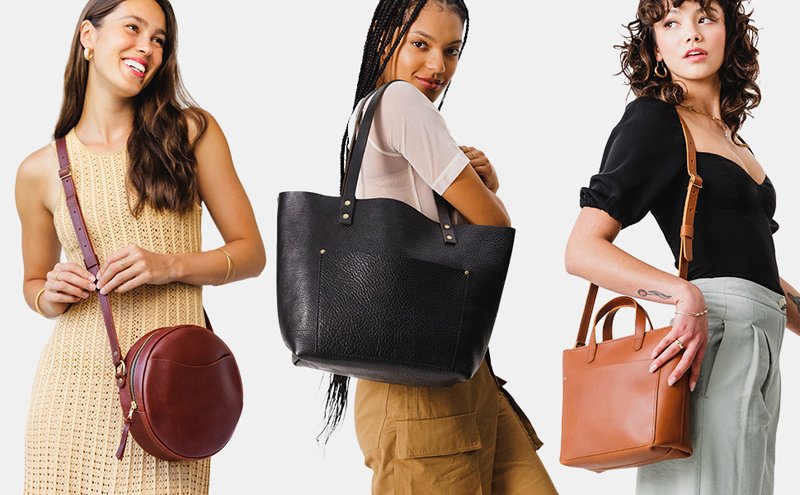
Custom leather bags remain one of the most profitable items in the leather industry. With personalization gaining popularity in recent years, people are increasingly drawn to custom designs that express their individual style. Whether it’s a bespoke handbag, a backpack, or a laptop case, customers are willing to pay a premium for something unique and made just for them.
Dive Deeper:Why Custom Leather Bags Are Profitable
Custom leather bags benefit from the rising consumer demand for uniqueness and exclusivity. People are willing to spend more when they feel the product is tailored to their tastes. This trend is especially evident in high-end fashion markets, where personalized bags can fetch significantly higher prices.
In terms of profitability, custom leather bags offer a solid return on investment due to the low production cost relative to the selling price. A basic leather bag might cost $50 to produce, but customization options like engraving, adding a custom logo, or unique color combinations can increase the price to upwards of $300, depending on the design and materials used.
Another key advantage of custom leather bags is the ability to target niche markets, including corporate clients who are looking for branded promotional bags. Custom bags for businesses, with logos or specific design elements, can generate bulk orders, which makes this an attractive business model for growth.
Profitability Snapshot
- Average production cost: $50–$100
- Customization fee: $30–$150 per bag
- Selling price range: $150–$1,000
- Profit margin: 50–75%
Leather Wallets: Affordable Luxury
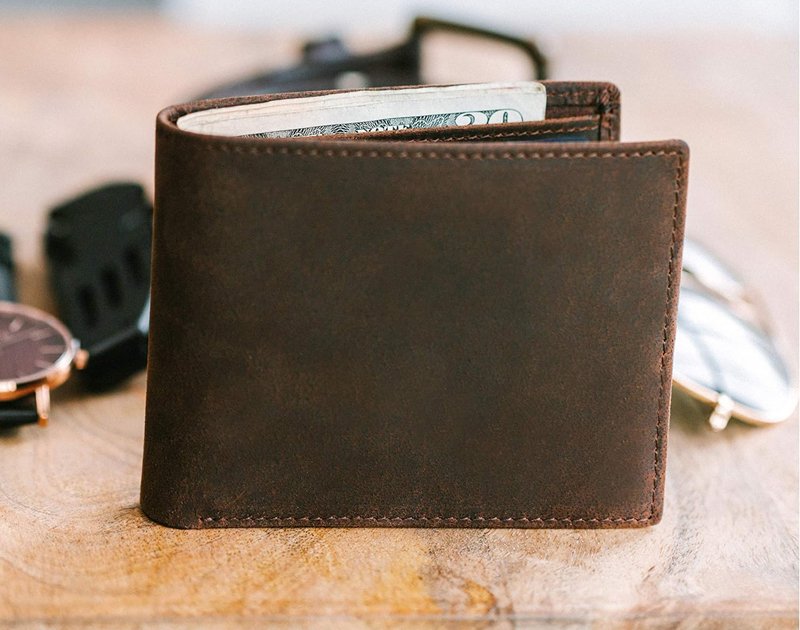
Leather wallets are an evergreen product in the leather industry, with widespread consumer appeal due to their functionality and luxury feel. Leather, known for its durability and texture, is considered the go-to material for wallets, providing a sophisticated look while offering long-lasting durability.
Dive Deeper:Why Leather Wallets Continue to Sell
Leather wallets cater to a wide range of consumers, from those looking for budget-friendly options to those seeking luxury, handcrafted wallets made from exotic leathers. While mass-market wallets can be sold for as low as $30, premium wallets made from high-quality leather or featuring intricate handcrafting techniques can sell for up to $500 or more.
The key to success in the wallet business is offering variety,think minimalistic wallets for young professionals, RFID-blocking wallets for tech-savvy individuals, or luxury wallets made from rare materials like alligator leather. Offering customization options, such as embossing initials or designing limited-edition collections, can increase the appeal of your product and help drive up the price.
Wallets are small, lightweight, and relatively low-cost to produce, which gives entrepreneurs an edge in terms of scalability. They are easy to sell online, making them a perfect product for e-commerce stores targeting both individual customers and corporate clients.
Profitability Snapshot
- Average production cost: $10–$40
- Selling price range: $30–$500
- Profit margin: 60–80%
Leather Footwear: A Growing Niche
Leather shoes and boots represent a lucrative segment within the leather industry. With their classic appeal and durability, they cater to a diverse range of customers, from those looking for everyday footwear to luxury buyers seeking handcrafted, limited-edition shoes.
Dive Deeper:The Market for Leather Shoes and Boots
The footwear market for leather products is continuously expanding. One of the main drivers is the growing trend for ethically produced and sustainable fashion. Consumers are increasingly aware of the environmental impact of fast fashion, which has led to a shift toward durable, high-quality leather shoes that can be worn for years.
Custom leather shoes are also gaining popularity. Many customers want shoes that are unique in style, size, and fit, creating a profitable niche market. Offering made-to-order shoes can lead to higher profit margins, as custom shoes typically sell for 50–100% higher than mass-produced models.
Additionally, leather boots, especially those used for hiking, work, and fashion, are consistently popular. Brands can target specific customer segments such as outdoor enthusiasts, professionals requiring durable footwear, and fashion-conscious individuals.
Profitability Snapshot
- Average production cost: $60–$150
- Selling price range: $120–$500
- Profit margin: 50–65%
Leather Jackets: High-End Fashion Staple
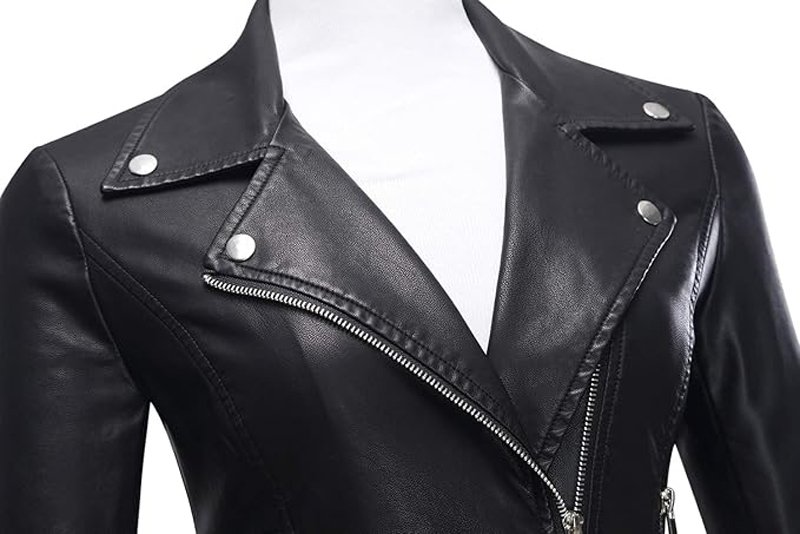
Leather jackets are a symbol of rebellion, elegance, and timeless fashion. They have always been considered a luxury item, and they continue to hold their value as staple pieces for both men and women. As more people seek statement pieces in their wardrobes, leather jackets remain an essential high-ticket item.
Dive Deeper:Why Leather Jackets Remain in Demand
Leather jackets are often the first major leather investment a person makes, which is why they are so valuable in the luxury market. Jackets made from high-quality leather can cost anywhere between $200 and $2,000, depending on the brand, design, and type of leather used.
The rise of influencer culture has further driven the demand for leather jackets, with social media influencers regularly showcasing their favorite jackets, adding to the aspirational appeal of the product. Sustainability is also becoming a key factor, with brands offering leather jackets made from vegetable-tanned leather or even synthetic leather alternatives, appealing to eco-conscious consumers.
In addition to classic designs, fashion-forward jackets with bold cuts and innovative features (e.g., detachable fur collars or zipper designs) are becoming more popular. Offering customization, such as personalized embroidery or unique color options, can help cater to a wider audience and increase the price of your jackets.
Profitability Snapshot
- Average production cost: $100–$300
- Selling price range: $200–$2,000
- Profit margin: 60–70%
Leather Belts: Essential Accessories
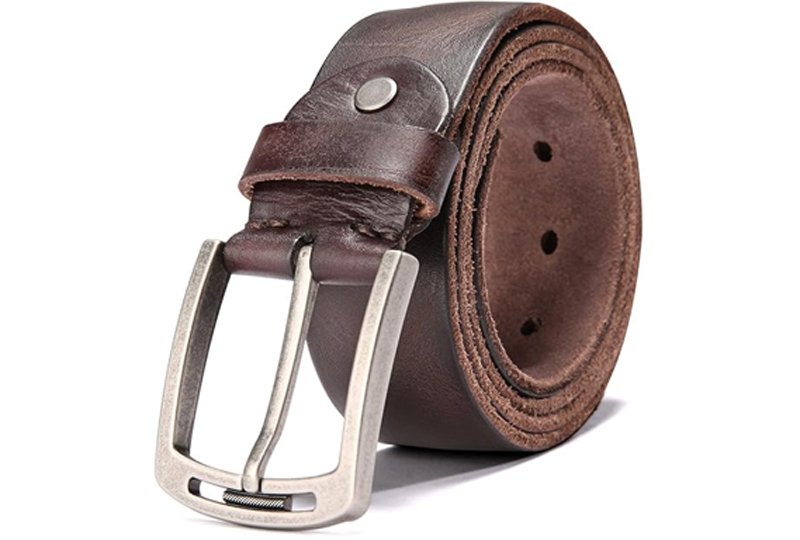
Leather belts are an essential accessory for most individuals, making them an evergreen product. They come in various styles, from formal dress belts to casual belts for everyday use. Additionally, belts are an excellent entry point for businesses looking to start in the leather industry due to their relatively low production costs.
Dive Deeper:The Consistent Demand for Leather Belts
Leather belts have a broad market appeal. Whether it’s a basic black belt for work or a decorative belt with a unique buckle for fashion, there’s always a demand. The average cost to produce a leather belt is low, often between $10 and $30, yet they can sell for anywhere from $40 to $150, giving you a healthy profit margin.
To stand out in the crowded leather belt market, consider offering customized products. Engraved names, unique belt buckles, and special colors are popular customization options that allow you to charge higher prices. Moreover, offering belts in various sizes or adjustable styles can help you target a larger audience.
Profitability Snapshot
- Average production cost: $15–$30
- Selling price range: $40–$150
- Profit margin: 50–70%
Leather Handbags: A Luxury Market
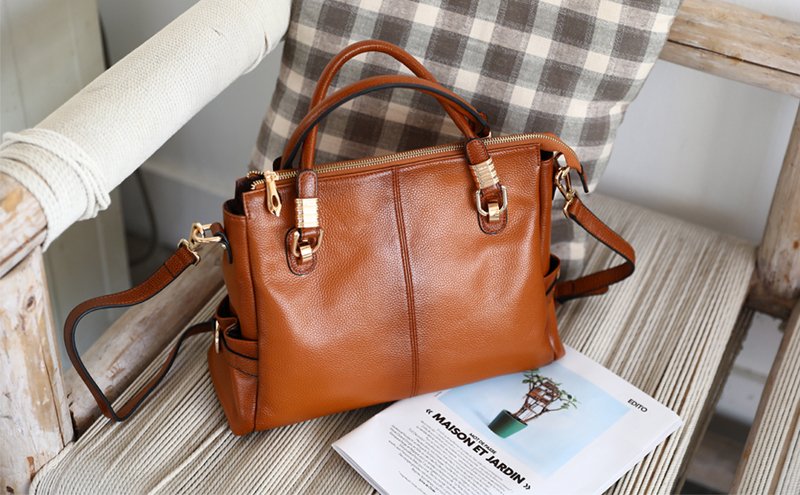
Leather handbags are one of the most profitable segments in the leather industry. As high-end fashion items, handbags made from premium leather are considered an investment. They’re available in many varieties, from simple everyday bags to statement pieces that can sell for thousands of dollars.
Dive Deeper:Why Leather Handbags Are a Profitable Business
Handbags are often associated with status, making them an appealing product for both high-end and mid-range consumers. Consumers tend to invest in quality leather handbags because of their longevity. Many high-end handbags from designers such as Louis Vuitton or Gucci can last for decades, making them worth the price tag.
There’s also a growing trend toward sustainable handbags, with brands offering eco-friendly options made from plant-based leather or upcycled materials. These products appeal to eco-conscious consumers who are willing to pay a premium for sustainable luxury.
One of the key strategies in the leather handbag market is the ability to create custom designs or limited-edition collections, allowing customers to express their individual style. By offering customization and exclusivity, you can attract loyal customers and build a high-end brand image.
Profitability Snapshot
- Average production cost: $80–$200
- Selling price range: $200–$2,000
- Profit margin: 55–70%
Leather Furniture: High-End Home Decor
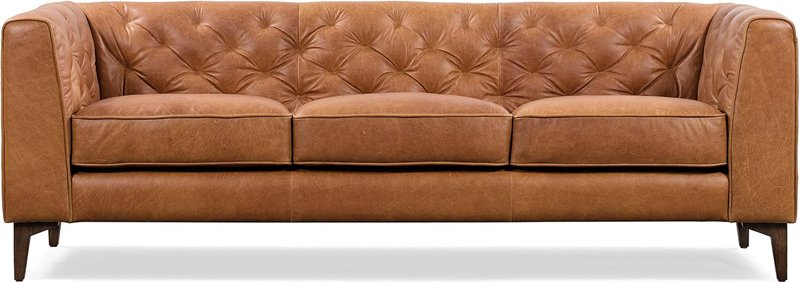
Leather furniture, especially couches, chairs, and ottomans, is a long-term investment for many consumers. Leather is durable, timeless, and easy to maintain, making it an ideal choice for upscale furniture pieces. The quality and longevity of leather make it a sought-after material for those looking to elevate their home decor.
Dive Deeper:How Leather Furniture Remains Popular
Leather furniture commands a high selling price due to its luxury appeal. The average leather sofa can cost anywhere from $1,000 to $5,000, depending on its size and design, making it a high-margin product for manufacturers.
While traditional leather furniture is always in demand, there is also a growing market for custom, modern, or eco-friendly leather furniture. By offering customization options like color choices, stitching patterns, or eco-friendly leather alternatives, you can cater to a wider audience and justify higher prices.
Profitability Snapshot
- Average production cost: $500–$2,000
- Selling price range: $1,000–$5,000
- Profit margin: 40–60%
Leather Sandals and Footwear: Fashionable and Comfortable
Leather sandals and footwear remain popular due to their comfort, durability, and natural ability to mold to the feet. With the increasing consumer interest in sustainable, long-lasting footwear, leather sandals and shoes are seeing a resurgence.
Dive Deeper:Why Leather Sandals and Footwear Are a Profitable Niche
The demand for leather sandals and footwear is growing globally, particularly in regions where warm weather is prevalent. Leather sandals are known for their durability and comfort, and consumers are willing to invest in these products for their long-term wearability.
In addition to comfort, leather sandals and shoes are also seen as a stylish alternative to mass-produced synthetic footwear. High-quality leather shoes, such as oxfords, loafers, and boots, can be marketed to professional men and women who appreciate classic, versatile styles.
The customization potential for leather footwear is significant. Brands can offer unique designs, such as hand-tooled leather sandals or boots with custom stitching or embossing. Sustainability is another critical factor. Vegan leather and eco-friendly practices, such as using vegetable-tanned leather, have attracted consumers looking for ethical options.
This market segment offers excellent profit margins, with footwear prices ranging from $50 to $500 depending on the design, material, and brand reputation.
Profitability Snapshot
- Average production cost: $30–$100
- Selling price range: $50–$500
- Profit margin: 55–70%
Leather Luggage: Luxury Travel Solutions
Leather luggage, including suitcases, carry-on bags, and travel duffels, represents the pinnacle of luxury travel. These high-end products offer durability, protection, and a sense of style, making them a great investment for travelers seeking long-term quality.
Dive Deeper:Why Leather Luggage Is a Top-Tier Investment
Leather luggage is a high-value product category that appeals to frequent travelers and luxury consumers. Luggage made from premium leather not only lasts longer but also ages beautifully, developing a unique patina over time. This makes leather luggage a coveted item, especially for those who want to combine function with style.
The market for leather luggage is highly profitable, with items often sold for hundreds or even thousands of dollars. For example, a leather suitcase can retail for $500 to $2,500, depending on the brand, size, and design. As with other leather goods, customization—such as engraving or bespoke colors—adds value to these high-end items.
Targeting the luxury market or collaborating with high-end travel brands for exclusive designs could significantly increase the profit margins for leather luggage businesses. Sustainable, eco-friendly leather alternatives also present an opportunity to tap into the growing conscious consumer market.
Profitability Snapshot
- Average production cost: $150–$500
- Selling price range: $500–$2,500
- Profit margin: 55–70%
Leather Repair and Restoration Services: Catering to the Maintenance Market
With leather goods lasting for many years, the demand for leather repair and restoration services continues to grow. Consumers are increasingly seeking services to restore their favorite leather items, such as bags, jackets, and shoes, to their original condition.
Dive Deeper:Why Leather Repair Services Are in Demand
As leather goods age, they often require maintenance and repair to keep them in good condition. Leather repair services cater to a broad market, from individuals looking to restore a beloved leather bag to businesses offering repairs on high-end leather goods. This service-based business offers significant profitability, with clients willing to pay for high-quality restoration that preserves the life of their leather items.
Restoration services include everything from cleaning and conditioning to re-dyeing, stitching, and replacing hardware. As with other leather products, there is a customization opportunity—restoring vintage items to their original glory or offering personalized design changes.
This business model allows for recurring revenue as leather items require periodic maintenance, making it a reliable source of income. Offering repair kits or products alongside repair services can also generate additional profits.
Profitability Snapshot
- Average production cost (materials): $10–$50
- Service charge: $50–$300 per item
- Profit margin: 70–85%
Who is The Largest Producer Of Leather in The World?
China is the largest producer of leather in the world, accounting for more than 50% of global leather production, followed by countries like India, Italy, and Brazil.
Dive Deeper: the Global Leather Production Landscape
When it comes to leather mass production, China leads the market by a significant margin, producing more than half of the world’s leather. This dominance is not only due to the country’s massive capacity to process raw hides but also its robust manufacturing infrastructure and low labor costs. China is home to thousands of leather factories, with major hubs like Guangdong, Zhejiang, and Shandong leading the charge. The country’s ability to combine vast production scale with highly efficient supply chains has made it a global leader in leather manufacturing.
India is another significant player in the leather industry. While it doesn’t surpass China in volume, India ranks second globally due to its large export market for both finished leather and leather products, such as footwear, garments, and accessories. India is also known for its high-quality, vegetable-tanned leather, which appeals to a different segment of the market, particularly those looking for sustainable and eco-friendly options. The country’s leather industry is also deeply rooted in traditional methods, which sets it apart from mass-market producers.
Italy, famous for its luxury leather goods, particularly in the fashion industry, holds a strong position as the world’s top producer of high-quality, designer-grade leather. Italian leather is synonymous with craftsmanship and elegance, and the country’s tanneries are known for their meticulous attention to detail and use of premium hides. Brands like Gucci, Prada, and Ferragamo are iconic examples of how Italian leather craftsmanship influences global luxury markets.
Brazil is another leading producer, especially in terms of raw leather for the global fashion and footwear industries. The country’s leather is in high demand due to its relatively low production costs and the quality of its cowhide, which is ideal for a variety of applications, from furniture to footwear.
How Much Does it Cost To Start A Leather Business?
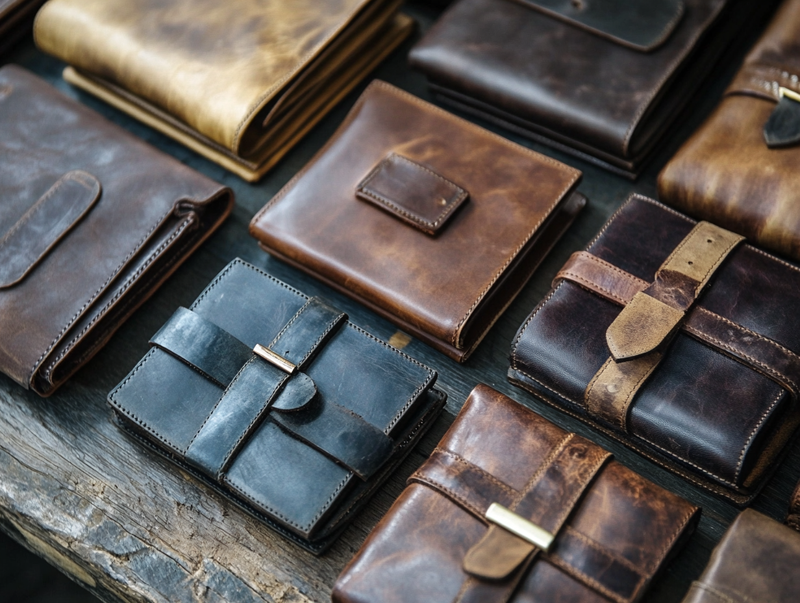
Starting a leather business can cost anywhere from a few thousand dollars to several hundred thousand, depending on the scale. Small businesses with minimal setup may begin with $10,000–$20,000, while larger manufacturing setups can exceed $100,000.
Dive Deeper: Breaking Down the Costs of Starting a Leather Business
Starting a leather business involves several key expenses that vary based on the type of business you want to run,whether it’s a small, artisan setup or a large-scale manufacturing operation. Here’s a breakdown of the most common costs involved:
- Initial Investment in Equipment and Materials: For a small business, the most significant initial cost will be the tools and equipment required for leather crafting, such as cutting tools, stitching machines, embossing tools, and dyeing supplies. If you’re manufacturing leather goods at scale, you’ll need more advanced machinery, including automatic stitching machines and molding equipment. The cost of this equipment can range from $5,000 for a small workshop setup to upwards of $50,000 for a full-scale manufacturing line.
- Raw Materials: Leather is a high-cost raw material, and the type of leather you choose will significantly impact your costs. Vegetable-tanned leather, for example, may be pricier than chrome-tanned leather, and different grades of leather will have different price points. Expect to spend between $2 to $10 per square foot depending on the leather’s quality, type, and source. In addition to leather, other materials like threads, zippers, buckles, and dyes will add to the total costs.
- Labor Costs: If you’re outsourcing manufacturing or hiring employees, labor costs can be significant. Small businesses might start with a few skilled workers or hire freelancers for specific tasks, while larger operations will need full-time staff for design, production, and management. Labor costs will vary based on location and the level of skill required, with wages for skilled leather workers averaging around $15 to $30 per hour.
- Facility and Overhead Costs: For small operations, you might start from a home-based studio, which can keep your overhead low. However, for larger-scale businesses, renting a commercial space for production and inventory storage will be necessary. Depending on your location, leasing a commercial space can range from $500 to $5,000 per month. Don’t forget utilities, insurance, and taxes—these ongoing costs will also add to your budget.
- Marketing and Branding: Developing a brand identity, creating a website, and promoting your products require significant investment. Marketing costs could range from $2,000 to $10,000 for a basic website, brand design, and initial advertising campaigns. This could include social media marketing, influencer collaborations, or paid ads to boost visibility.
- Miscellaneous Expenses: Other costs include shipping, packaging, permits or licenses, and ongoing product development or improvements. Depending on your business model, these expenses can range from hundreds to thousands of dollars per year.
While a small-scale leather business might start with a modest investment of $10,000 to $20,000, large-scale manufacturing businesses may require upwards of $100,000 to get off the ground. The key to managing costs effectively is planning ahead, investing wisely in materials and equipment, and finding ways to streamline production. It’s important to consider all these factors to get a clear picture of how much it will cost to start your leather business and ensure you’re financially prepared.
Conclusion
These 20 leather business ideas for 2025 provide a comprehensive view of opportunities in the leather industry. Each of these business models offers unique advantages and revenue potential, whether through high-end luxury products, customizable accessories, or service-based offerings like repair and restoration.
If you are considering entering the leather business, there are countless avenues to explore, each with its own market, customer base, and growth potential. By offering high-quality products, excellent customer service, and an eye for trends, you can position your leather business to succeed and thrive in 2025 and beyond.
At Szoneier, a leading leather goods manufacturer based in Shenzhen, we fully understand the complexities and opportunities that come with starting a leather business. With our extensive knowledge and experience, we offer tailored consultation services to help aspiring entrepreneurs navigate the leather industry. Additionally, our sampling and manufacturing services are designed to bring your business ideas to life. Whether you’re looking to create custom leather products or refine your designs, we’re here to support you every step of the way. Visit our website to schedule your consultation today!






